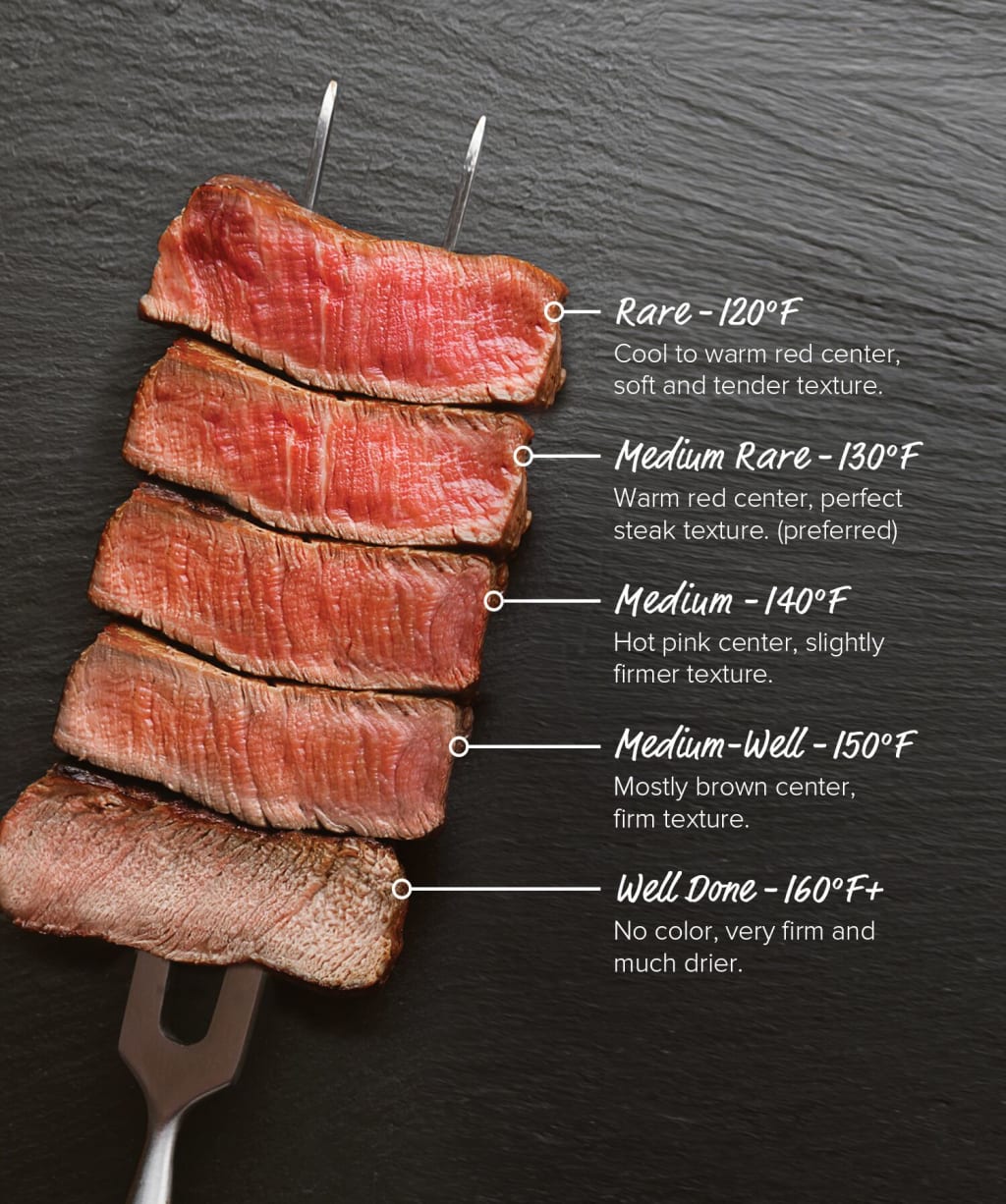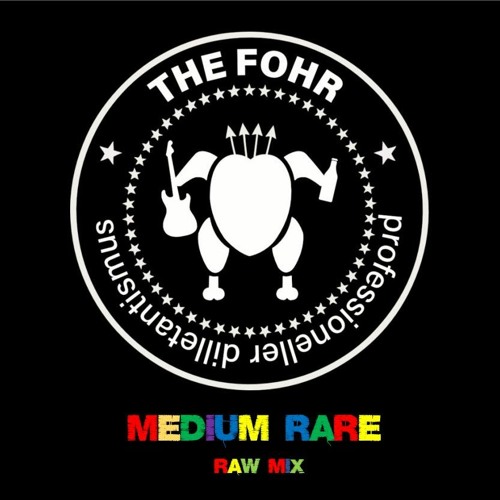Have you ever wondered whether medium rare is actually raw? If you're anything like me, you've probably sat at a restaurant, knife in hand, wondering just how much "raw" is too much. Let's dive into this juicy topic together, because knowing your steak's doneness can make all the difference in your dining experience.
Picture this: you're sitting at your favorite steakhouse, the ambiance is perfect, and the waiter just placed a perfectly cooked medium rare steak in front of you. But wait—what exactly does "medium rare" mean? Is it raw? Is it safe to eat? These are questions that every steak enthusiast should have answers to.
Today, we’re going deep into the world of steak doneness. Whether you're a seasoned carnivore or just someone who enjoys the occasional beef dish, this article will give you the knowledge you need to confidently order your next steak and understand what you're putting on your plate. So grab a fork (or not, if you're reading this during lunch), and let's get started!
Read also:Billie Eilish Naked A Deep Dive Into The Controversy And Creativity
What Does Medium Rare Mean?
Alright, let's clear up the confusion right off the bat. Medium rare is not raw—it's definitely cooked, but not fully. Here's the scoop: medium rare means the steak is seared on the outside, with a pink center that's warm to the touch. The internal temperature typically falls between 130°F and 135°F (54°C to 57°C). So, while it may look "raw" in the middle, trust me, it's been through quite the culinary journey.
Is Medium Rare Steak Safe to Eat?
Now, let's talk safety. Many people worry about eating medium rare steak because they think it's unsafe. Here's the deal: as long as the steak comes from a reputable source and is properly handled, you're good to go. Most bacteria that could cause issues are found on the surface of the meat, which gets killed during the cooking process. So, unless you're dealing with some sketchy cuts, medium rare is A-OK.
Why Do People Prefer Medium Rare?
Let's be real—medium rare is a favorite for a reason. Fans of this level of doneness rave about the tenderness and juiciness that it brings to the table. The pink center retains all the natural flavors and moisture, making each bite an explosion of goodness. Plus, it's got that perfect balance of being cooked enough to be safe, but not so much that it dries out the meat.
Benefits of Choosing Medium Rare
- Maximum flavor retention
- Super tender texture
- Moist and juicy every time
- Perfect for cuts like ribeye and filet mignon
How to Cook the Perfect Medium Rare Steak
Cooking a medium rare steak at home isn't as hard as it seems. All you need is a good cut of meat, a hot pan, and a meat thermometer. Start by letting your steak come to room temperature, then sear it in a hot skillet with a bit of oil. Once both sides are golden brown, pop it in the oven for a few minutes. Use the thermometer to check the internal temp—once it hits around 130°F, you're golden.
Essential Tools for Cooking Medium Rare Steak
- Cast iron skillet
- Meat thermometer
- Good quality beef
- Sea salt and pepper
Common Myths About Medium Rare Steak
There are a few myths floating around about medium rare steak that we need to debunk. One of the biggest ones is that it's "raw." As we've already established, that's just not true. Another myth is that medium rare steak is only for the brave. In reality, it's a popular choice for a reason—it's delicious and safe to eat. Don't let these misconceptions steer you away from trying something new!
How to Order Medium Rare Steak at a Restaurant
When you're dining out, ordering medium rare is as simple as saying "medium rare" when the waiter asks how you'd like your steak cooked. But here's a pro tip: if you're unsure, ask for a recommendation. Most servers know their menu inside and out and can guide you toward the best cut for medium rare cooking. And hey, don't be afraid to send it back if it's not cooked to your liking—that's what good service is all about.
Read also:Hd4hub 2024 Your Ultimate Guide To The Latest Innovations In Highdefinition Content
Tips for Ordering Steak at Restaurants
- Ask about the cut of meat
- Specify your preferred doneness level
- Trust the chef's recommendation
- Don't hesitate to send it back if it's not right
Is Medium Rare Steak Better Than Other Doneness Levels?
Here's the thing: whether medium rare is "better" depends entirely on personal preference. Some people love their steak well done, while others swear by rare. But if we're talking about flavor and texture, medium rare often comes out on top. That being said, there's no one-size-fits-all answer here—it's all about what makes your taste buds happy.
What Happens If You Cook Steak Beyond Medium Rare?
Cooking steak beyond medium rare can lead to a loss of moisture and flavor. As the internal temperature rises, the juices start to evaporate, leaving you with a tougher, drier piece of meat. That's why many steak enthusiasts stick to medium rare—it preserves the steak's natural goodness without overcooking it.
Doneness Levels and Their Characteristics
- Rare: cool red center, very soft
- Medium Rare: warm pink center, tender
- Medium: pink center, firmer texture
- Well Done: brown throughout, tough and dry
How to Tell If Your Steak Is Medium Rare Without a Thermometer
If you don't have a thermometer handy, don't worry—you can still tell if your steak is medium rare by touch. Press the center of the steak gently with your finger. If it feels soft but still has a bit of bounce, you're in the medium rare zone. Of course, using a thermometer is the most accurate method, but this trick can come in handy in a pinch.
Final Thoughts: Is Medium Rare Raw?
So, is medium rare raw? Absolutely not! It's a perfectly cooked piece of steak that strikes the ideal balance between flavor, tenderness, and safety. Whether you're cooking at home or dining out, give medium rare a try—you might just find it becomes your go-to choice. And remember, the key to a great steak experience is knowing your preferences and trusting the process.
Now it's your turn! Share your thoughts in the comments below. Do you love medium rare, or do you prefer your steak cooked differently? And don't forget to share this article with your fellow steak lovers. Happy grilling, and may your steaks always be perfectly cooked!
References
For those who want to dive deeper into the science of steak doneness, here are a few trusted sources:
Table of Contents
- What Does Medium Rare Mean?
- Is Medium Rare Steak Safe to Eat?
- Why Do People Prefer Medium Rare?
- How to Cook the Perfect Medium Rare Steak
- Common Myths About Medium Rare Steak
- How to Order Medium Rare Steak at a Restaurant
- Is Medium Rare Steak Better Than Other Doneness Levels?
- What Happens If You Cook Steak Beyond Medium Rare?
- How to Tell If Your Steak Is Medium Rare Without a Thermometer
- Final Thoughts: Is Medium Rare Raw?


